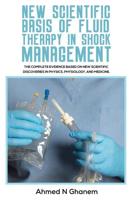Publisher's Synopsis
The pace of change in analytical chemistry has continued unabated since the second edition was published in 1983, and in some areas - notably the computer control of laboratory instruments, data handling and automation - the changes have been dramatic. Most instrumental techniques have benefitted from these developments in terms of reliability, versatility and the processing and presentation of data. The increasing power of microcomputers in respect of speed, memory capacity and graphics capability has been one of the major factors in these improvements. The real-time processing of analytical data, multicolour display modes, windows-based software packages and the networking of computers and instruments throughout the laboratory have brought big improvements in industrial analytical practice and laboratory management. For the analytical chemist, however, it is worth remembering that the computer processing of data and presentation of results is only as good as the quality of the original data and the software employed. We have tried to indicate the nature of the recent changes and developments without compromising the principal subject matter of the book which remains the analytical techniques themselves and their applications. As with the second edition, the format is unchanged but significant alterations and additions have been made, including over forty new or amended figures and tables. A new chapter has been added on thermal techniques, the uses of which have been growing steadily throughout the 1980s.










